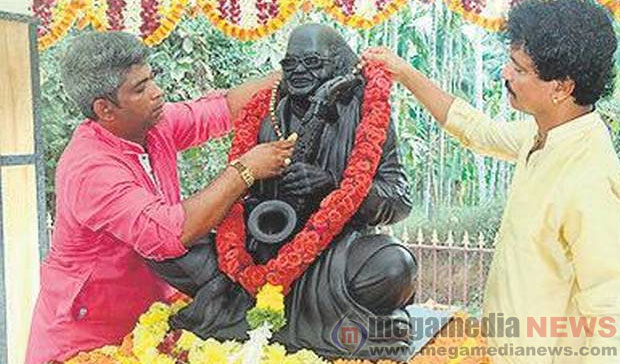Memorial to Kadri Gopalnath constructed at his birthplace
12:07 PM, Monday, December 7th, 2020 Mangaluru : The memorial, with a statue of the artiste holding a saxophone, was dedicated on Gopalnath’s 71st birth anniversary at Sajipa at his birth place in Bantwal on Sunday.
Mangaluru : The memorial, with a statue of the artiste holding a saxophone, was dedicated on Gopalnath’s 71st birth anniversary at Sajipa at his birth place in Bantwal on Sunday.
The memorial is spread over 2,000 sq. ft, and has a garden.
A plaque in Kannada at the memorial reads: “Music is a language which knows no boundaries of nation and dharma. It is a language of the heart.”
Family members of the late Padma Shri awardee have constructed the memorial in their own land in Bantwal, where he had been buried more than a year ago.
The artiste, born on December 6, 1949, had passed away in Mangaluru on October 11, 2019.
His son and music director Manikanth Kadri said the statue was made of ‘Krishna Shile’ (black granite).
Eleven-year-old S. Tridhaat from Bengaluru, one of the youngest disciples of the late Kadri Gopalnath, saxophone maestro, was the first to pay a musical tribute to his ‘guru’ with the song Paavana guru in the raga ‘Hamsanandi’, as a memorial to the musician was open.
Tridhaat, playing on a saxophone given to him by his guru, rendered the two inaugural songs at the instrumental concert organised by the family during the dedication ceremony.
Tridhaat’s father Sridhar Sagar, also a saxophone artiste and Asthana Vidwan (artiste in residence) of the Kanchi Kamakoti Peetham, said Gopalnath had brought the saxophone for his young disciple from the U.S. Tridhaat had learnt the basics of playing the saxophone from Gopalnath in 2014, when he was about seven-years-old, he told .
K.S. Babu Narayan, a professor of civil engineering at the National Institute of Technology Karnataka, Surathkal, played the guitar to pay his respects. “Mr. Gopalnath had fine tuned my music skills,” he told .
Porkodi Gopalakrishna Jogi, Gopalnath’s first saxophone teacher, was felicitated on the occasion. Sarojini Gopalnath, the wife of the late artiste was also present.
Mr. Manikant Kadri said there was a proposal to develop a cultural centre in Mangaluru in memory of the saxophone player.
It will be similar to Kalamandalam in Kerala. The cultural centre should be a place for teaching and learning various fine arts, folk dances and music.
Simillar Posts
Warning: count(): Parameter must be an array or an object that implements Countable in /home/megamcaq/public_html/wp-content/plugins/post-plugin-library/common_functions.php on line 357
- None Found
Leave a Reply
© Copyright 2008 www.megamedianews.com All Rights Reserved. Privacy Policy








 Posted in
Posted in  Tags:
Tags: 



